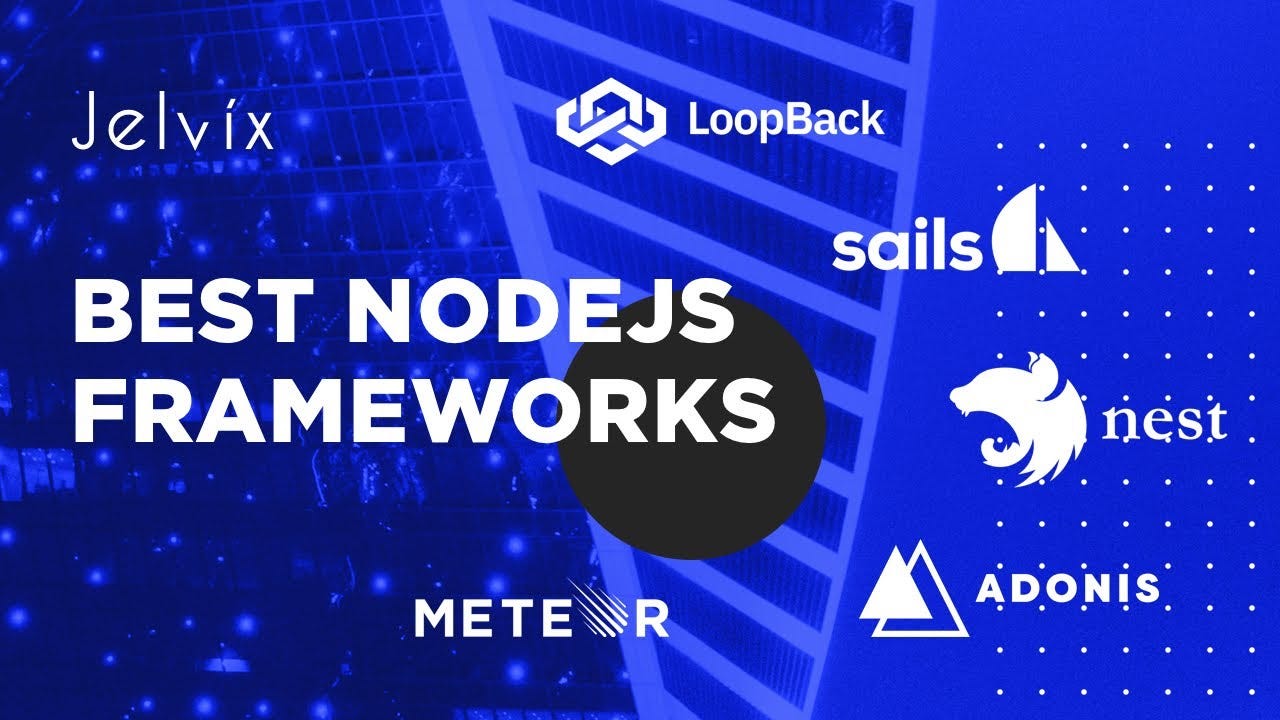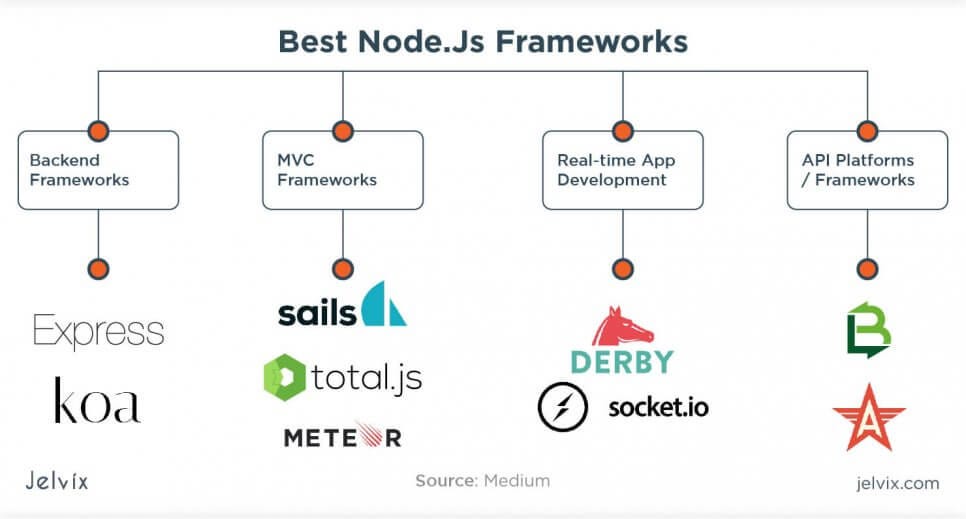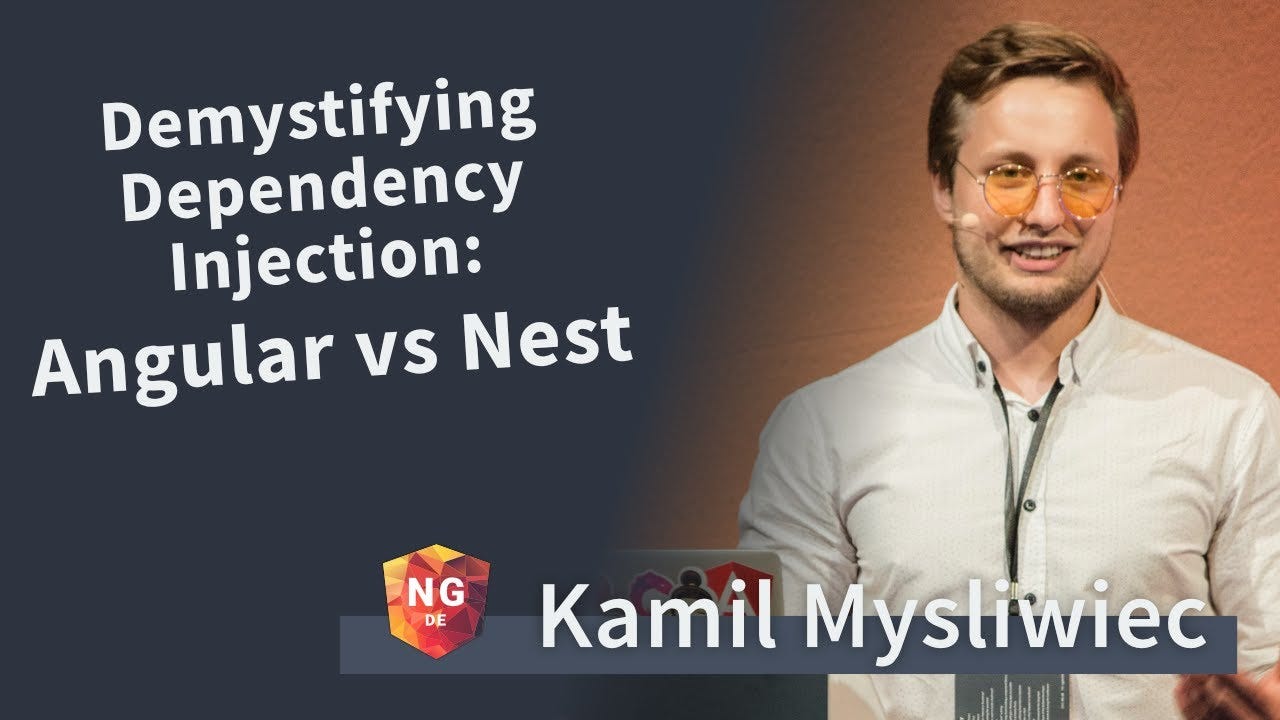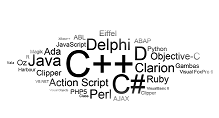Sunday 15 November 2020
Google AI Releases ‘Objectron Dataset’ Consisting Of 15,000 Annotated Videos And 4M Annotated Images
MongoDB Training (beginner to expert level) [Free online courses]
Description
MongoDB is a very popular NoSQL database that is fast and scalable. When scalability and speed are required, this database shines. It is a document database which imposes very little and has drivers for many programming languages. MongoDB is a general purpose, document-based, distributed database built for modern application developers and for the cloud era.
Uplatz provides practical training on MongoDB with focus on real-world scenarios and examples. This MongoDB training course will get you familiar with this unique database and arm you with the essential skills to start using mongo to power your software application. This course will teach you how to get mongo running, manipulate and query data, index for speed, and arm you with the essential skills required to start using Mongo.
As table-based databases struggle to cope with an ever-growing variety of data, this MongoDB training course will show you how its document-oriented nature will allow you to quickly build highly scalable applications. You will gain the skills to develop, administer, secure, and scale MongoDB-based applications, and acquire low-cost, data-driven applications with MongoDB as the back-end database.
This MongoDB course is designed to give delegates experience of installing and using the MongoDB database. It introduces delegates to the concept of a document-oriented database, then shows how to set up MongoDB for use. Delegates use the built-in shell and various APIs to build a database access application and manipulate data. We also investigate optimising queries using indexes and aggregating data with MongoDB functions.
The course ends with some popular interview questions that you will face in a MongoDB database developer/architect/DBA job role.
MongoDB Course Curriculum
Introduction to NoSQL Architecture with MongoDB
What Is MongoDB?
Downloading the required Software
Installation and Configuration
MongoDB Advantages
MongoDB Data Modelling
MongoDB Tools, Collection and Documents
Configuration Files
Touring the File Structure
Securing the Installation
CRUD and the MongoDB Shell
Introduction to CRUD
Introduction to the MongoDB API
Creating a Database, Collection and Documents
Data Modelling and Schema Design
MongoDB Database References
Model Tree Structures
MongoDB Analyzing Queries
MongoDB Atomic Operations
MongoDB Map Reduce
MongoDB Text Search
MongoDB Regular Expression
MongoDB Capped Collections
Data Storage
Working with Datatypes
Collections
Document Datatypes
Creating _id Fields
Querying Data
Databases and Collections
Querying Collections
Working with Operators
Referencing a Database
Querying Dates
Manipulating Data
Inserting Data into Collections
Updates
Deletes
Atomic Operations
Removing Data
Capped Collections
High Performance Options
Creating Indexes
Manipulating Index Behaviour
Index Properties
Specialised Index Types
Replication
Sharding
Aggregation Framework
Aggregating Results
Single Purpose Functions
The Aggregation Pipeline
Date Aggregation Operators
Indexing
Indexing and Aggregation
Indexing, query profiling and the query optimizer
Geospatial Indexes
Index types, Index Properties
MongoDB Advanced Indexing
MongoDB Indexing Limitations
Aggregation Introduction
Replication
Replication Concept
Failover & Recovery
Administration
MongoDB Deployment and Cluster setup
MongoDB GridFS
Trident Spout
Working with Replica Sets
MongoDB Sharding
MongoDB Create Backup
Using an API
Introducing Drivers
Java
PHP
Ruby
Python
MongoDB Course Objectives
Develop highly scalable and cost-efficient applications with MongoDB
Build efficient MongoDB data models for enterprise-scale applications
Enhance performance with indexing and sharding
Manage consistency with write concern and read preference
Process data and compute results with aggregation pipelines and MapReduce
By the end of the MongoDB training, the students will be able to:
Install and setup the MongoDB database
Use the MongoDB shell to access the database
Create, retrieve, update and delete data
Use aggregation queries
Appreciate the APIs used to interface with MongoDB
Understand the document based structure of the database
Use an API to develop applications
Optimise queries with indexes
Document based data modelling
Create document collections
CRUD operations with the Mongo shell
Aggregation pipelines
MongoDB transactions
MongoDB access using programming languages
Create indexes
We are hiring Senior Drupal Developer
we are seeking a Senior Drupal Developer to work onsite in Washington, DC (Remote during Covid). This position is supporting the Department of Homeland Security (DHS).
***Public Trust Clearance Preferred***
Position Description/Duties
Seeking a Drupal Developer who can design, code, debug, and test innovative applications for
a Drupal-based Content Management implementation in a fast-moving, cutting edge
government client environment.
Responsibilities include:
• Lead in the design, implementation, testing and deployment of enterprise Drupal web apps
• Work with others to refactor and implement complex functionality by using PHP to create
custom Drupal modules
• Assist with gathering requirements/dependencies for migrations from Drupal 7 to Drupal 8
and lead migration efforts
• Lead migrations from Drupal 8 to Drupal 9 for enterprise-scale Drupal web apps
• Share knowledge and assist with training other Drupal developers
Required Minimum Qualifications:
• BS/BA, preferably in Computer Science or other technical, analysis, or mathematics
subject area (or equivalent relevant experience in addition to the minimums below)
• U.S. Citizenship is mandatory – must be clearable to Public Trust level
• 5+ years’ experience developing with all the following: PHP, HTML, CSS, and JavaScript
• 5+ years’ experience developing with Drupal 7 and Drupal 8, including site building,
demonstrated custom module development, and theming
• 3+ years’ experience with web services technologies such as XML, SOAP, REST, and JSON
• Solid understanding of Service-Oriented Architectures
• Professional work experience with MySQL and at least one other RDBMS
• Experience with large-scale Drupal 7 to Drupal 8 migrations
• Experience with a variety of production tools, technologies, and techniques for design and
development, including IDEs, source control, build tools and testing frameworks
• Experience developing user interface code that meets usability/accessibility standards
(including Section 508 accessibility) and knowledge of tools that aid in this compliance
• Experience identifying and understanding organizational and user requirements and
specifications and translating those into quality code
• Ability to interact professionally and effectively with other team members and customers
• Must be able to think creatively and analyze/solve difficult problems with logic and tenacity
• A demonstrated ability to work independently on complex tasks with little direction,
supervision, or management oversight
Preferred Qualifications:
• Deep knowledge of Drupal application architecture and development norms
• Drupal certifications (through Acquia)
• Experience working in an Agile development environment
• Experience working with cloud computing platforms (AWS, Azure, etc.)
• Experience working on Federal government programs
• Knowledge of Federal information system security requirements
• Active participation in the Open Source and Drupal communities
Position Duration:
• Start: ASAP - pending approval and security vetting by customer
We are #HIRING Salesforce Developer/ Orlando, FL Salary: $140k Annually
HP is hiring [ Jobs Updates] - ProgGeek
HP is hiring
Position: IT Developer/ Engineer
Applies basic foundation of a function's principles, theories and concepts to assignments of limited scope. Uses professional concepts and theoretical knowledge acquired through specialized training, education or previous experience. Develops expertise and practical knowledge of applications within business environment. Acts as team member by providing information, analysis and recommendations in support of team efforts. Exercises independent judgment within defined parameters.
Responsibilities:
- Participates as a member of development team. Performs basic analysis of functional requirements. Completes code stubs prepared by more senior developers. Participates in code review. Prepares and executes Unit tests under supervision. Applies growing technical knowledge to maintain a technology area (e.g. Database Administration).
Education and Experience Required:
- Typically a technical Bachelor's degree or equivalent experience and a minimum of 0-2 years of related experience.
Knowledge and Skills:
- 0-2 years experience in writing code (such as, and not limited to, Java, C, C++, C#, VB.Net; databases like SqlServer/ Oracle.
- Basic Understanding of RDBMS and Database scripting. Basic understanding of testing tools and test scripting.
👉 Apply
👍 All the best.
📤 Share with your friends & colleagues
Saturday 14 November 2020
ArcGIS 10.8 | INSTALLATION ET ACTIVATION CRACK 2020
ArcGIS 10.8 | INSTALLATION ET ACTIVATION CRACK 2020 :
ArcGIS 10.8 | Installation et activation sans problèmes Esri crack 2020:
10.8 est désormais disponible avec des mises à jour et des améliorations dans l’ensemble du produit, de l’administration aux données, aux cartes et aux applications.
Sans plus tarder ,voyons les nouveautés!
Mode lecture seule:
Le mode lecture seule «fige» votre environnement ArcGIS Enterprise afin que les administrateurs puissent effectuer la maintenance du système, installer des correctifs et mettre à niveau sans subir de temps d’arrêt ou de perte de données. Le mode lecture seule existait auparavant pour des composants individuels dans ArcGIS 10.8 Enterprise comme ArcGIS Server et ArcGIS Data Store (et continue de le faire). Cependant, le fait de mettre ces composants en mode lecture seule n’a pas empêché certaines opérations telles que la modification des données dans le portail d’entreprise et ne s’applique pas à des serveurs spécifiques comme votre serveur d’hébergement.
Avec 10.8, vous pouvez mettre tout ArcGIS Enterprise en mode lecture seule. En lecture seule, les utilisateurs pourront se connecter et afficher du contenu dans ArcGIS Enterprise, mais ils ne pourront pas modifier les données, créer ou enregistrer des éléments comme les cartes Web ou mettre à jour les paramètres administratifs. Pour une liste complète des opérations autorisées et bloquées, consultez la rubrique d’aide Mode lecture seule dans ArcGIS Enterprise.
En tant qu’administrateur, vous pouvez définir ArcGIS 10.8 en lecture seule dans le répertoire de l’administrateur du portail (illustré ci-dessous). Là, vous pouvez personnaliser le message affiché aux utilisateurs une fois qu’une action est empêchée en raison du mode lecture seule.
API REST où un administrateur peut définir ArcGIS Enterprise en lecture seule.
L’option pour définir ArcGIS Enterprise en lecture seule dans le répertoire de l’administrateur du portail.
Notez que la lecture seule étant nouvelle à partir de 10.8, vous pourrez profiter des avantages de la mise à niveau lors de la mise à niveau de 10.8+ vers des versions supérieures.
Bannière d’information :
De nombreux administrateurs ont demandé une bannière personnalisée dans ArcGIS Enterprise et ArcGIS Online qui affiche des informations telles que l’état de l’environnement, des avis importants et même des niveaux de classification.
Avec la nouvelle bannière d’informations, vous pouvez personnaliser un message statique qui apparaît pour chaque utilisateur en haut et en bas de chaque page du portail d’entreprise. Votre bannière peut informer les utilisateurs de la maintenance du système à venir, diriger les utilisateurs vers de nouvelles ressources ou informations, ou même être utilisée pour distinguer votre environnement ArcGIS Enterprise de votre organisation ArcGIS Online.
Vous pouvez voir la bannière d’information en action ici en bleu:
Une carte dans ArcGIS Enterprise avec une bannière d’informations signalant que l’environnement sera en cours de maintenance.
La nouvelle bannière d’informations s’affiche en haut et en bas de chaque onglet de votre portail d’entreprise.
Pour plus d’informations, consultez la rubrique d’aide Configurer les paramètres de sécurité> bannière d’informations.
Avis d’accès :
Il a également été fréquemment demandé de fournir un avis contextuel qui doit être accepté avant d’accéder à ArcGIS Enterprise et ArcGIS Online.
La nouvelle notification d’accès apparaît sous forme de boîte de dialogue chaque fois qu’une personne visite ArcGIS Enterprise et / ou toute URL y menant. Avant d’accorder un accès supplémentaire, l’utilisateur doit accepter la notification. Si l’avis est refusé, l’utilisateur ne peut pas accéder à l’environnement.
Voici un exemple où je visite un environnement ArcGIS Enterprise avec un avis d’accès (notez que vous pouvez personnaliser entièrement le texte ici):
Exemple d’avis d’accès exigeant l’acceptation de continuer
Pour continuer et visiter le portail d’entreprise, les utilisateurs devront accepter cet avis.
Vous pouvez utiliser l’avis d’accès de la manière qui convient à votre organisation. Un cas d’utilisation courant consiste à exiger l’acceptation des conditions générales avant d’accorder l’accès à l’environnement.
Nous aimerions recevoir vos commentaires sur la façon dont vous utilisez ou prévoyez d’utiliser la bannière d’informations et l’avis d’accès.
Pour plus d’informations, consultez la rubrique Configurer les paramètres de sécurité> avis d’accès.
Saturday 7 November 2020
Which One Is the Best Node.js Framework: Choosing Among 10 Tools
Development frameworks are used to organize the development progress. Developers get the ready structure for their code base, can apply reusable elements, and increase product speed. Using web frameworks for the front end is common — developers use frameworks to work with JavaScript.
Using frameworks for backend is slightly less common, but it is just as helpful. When we work on web development projects, we apply frameworks to a client- and server-side alike — because it’s highly efficient and convenient.


How to choose the best Node.js framework?


Scalability
Node.js web frameworks provide a defined structure for a codebase. In the long run, they decide what characteristics your product will have, how the app will process the data, and handle computing. You want a framework that isn’t too opinionated — it shouldn’t limit you in possible ways of executing the project. If the framework boxes you one method, it definitely is not good enough.
Functionality
- Support of declarative programming: such programming describes the platform saved by a feature and its solution. We prefer the frameworks that support declarative metadata describing the parameters and middleware of Node.js handlers.
- Cluster management: it’s nice when a framework allows organizing, previewing, editing, and managing clusters, as well as sorting them by their characteristics.
- Middleware support: middleware is software that helps developers improve their application’s performance, security, etc. It’s not a framework, but it can be integrated. Middleware helps to optimize your application functionality and to deliver a better experience.
- Batch support: not all frameworks are equally good at handling multiple background processes simultaneously. We prefer frameworks that let us access the same databases and APIs caches, regardless if they are currently running. This allows us to get many things done as soon as possible.
Best Node.js API frameworks
Express.js


Advantages
- Easy route handling with URLs and HTTP protocol;
- Supports middleware, allowing developers to install helpful tools for speed, responds, and performance improvement;
- Supports multiple template engines;
- Works well with both static and dynamic content;
- Easily integrates with SQL and NoSQL databases;
- As the most popular Node.js framework has a rich open-source ecosystem.
Companies that use Express.js
Meteor.js


The framework can be integrated with Cordova, which means developers are able to build native mobile apps while reusing Meteor’s code. That said, Meteor is hardly the best option for complex long-term projects; the ecosystem of the framework has the reputation of being a ghost town — the framework has been getting increasingly less popular over the years. Still, it’s a good choice for time- and cost-efficient solutions.
Advantages of Meteor.js:
- A fast Node.js framework for MVP development and prototype;
- Smart packages: a single command can be used to connect multiple features;
- Small codebase: in Meteor, developers can get quite a lot of functionality with only a few lines of code.
Companies that use Meteor.js
Koa.js


Koa is one of the simplest Node.js frameworks out there. It’s elegant and lightweight. On top of that, the installer file doesn’t feature a built-in templating tool or router. Many Express plugins and libraries have been adapted to Koa. It’s similar to Express, only simpler and slightly less universal.
Koa is not hugely popular among enterprises, and it’s considered a startup solution that offers a lightweight approach to web development. The framework mainly gained traction when Express wasn’t updated for some time, but now, after Express’ team resumed active support, the framework is losing its initial traction.
Advantages of Koa.js Companies that use Koa
Sails.js


Its model-view-controller is similar to what Ruby on Rails offers but supports more data requests. It’s a popular choice for real-time services and data-based applications. The framework is famous for its ability to generate REST JSON automatically and default HTTP support.
Advantages of Sails.js
- Sails is one of the most popular Node.js MVC frameworks;
- The framework supports multiple databases simultaneously;
- Sails has multiple integrations and plugins, and has a solid support of Angular;
- The framework automatically generates REST APIs;
Companies that use Sails.js
Nest.js


Node.js’ architecture is hugely inspired by Angular — to the point where both teams participate in the events together. The logic behind code providers, controllers, pipes, interceptors is similar to Angular’s structural solutions. Developers that worked with Angular before will find Nest easy to master.


Advantages of Nest.js
- Integration with Express: add-ons and packages for Express can be easily reused for Nest;
- Smooth integration with Angular: teams that use Angular for front-end development, will have no issues connecting Nest to their codebase;
- A quickly-growing community: many Node.js frameworks had their growth peak back in 2013, but Nest.js keeps the momentum and can now easily compete with Express;
- Ready-to-use patterns: Nest.js is a highly predefined framework that does a lot of basic development activities for developers;
- Fast performance;
- Easy-to-learn: if you have used Angular or Express before, you would easily switch to Nest.
Companies that use Nest.js
LoopBack.js


An open-source Node.js framework that uses ready modules to connect Node.js to APIs of HTML5, iOS, and Android. With LoopBack, applications can record data, upload files, create emails, create push notifications, register users, and request information from databases.
The application supports the SQL and NoSQL databases, allowing conversion of web applications to mobile apps, running the software locally, or in the Cloud, and changing the settings of push-notifications.
Advantages of LoopBack.js Companies that use LoopBack.js
Hapi


First and foremost, Hapi checks each installed NPM package. We already discussed how problematic Node Package Manager content could be — Hapi solves this issue by running a security test. Hapi focuses on enabling advanced cookie functionality, secure HTTPs, and authorization settings.
All security updates in Hapi’s development have a clearly defined immutable ownership. If something goes wrong, developers know whom to hold accountable. Hapi also offers a collection of plugins, although not as many as in Express or Nest.
Hapi’s advantages Companies that use Hapi
Adonis.js


The framework was hugely inspired by Laravel, so developers who worked with this PHP framework will perhaps have the easiest time transferring to Adonis.js.
Advantages of Adonis.js Companies that use Adonis:
Keystone.js


It’s a for static and dynamic content management that is commonly used for content-heavy web projects. Information portals, content management systems, online editorials, forums, social media, and e-commerce platforms are the most common applications of Keystone.
Keystone consists of a range of modules, supporting core functionality for backend, UI tools, web protocols, and Mongoose 4 — a database for object modeling in Node.js.
Advantages
- A flexible tool for dynamic Node.js development that can handle large masses of content quite well and easily;
- Intuitive UI that consists of decentralized modules;
- Smart data models enabled by native Mongoose support;
- A real-time framework for managing, tracking, and publishing updates;
- A native add-on for image editing, storage, and management;
- Location tracking with Google Places;
- Intuitive embedding with Embedly.
Companies that use Keystone.js
Total.js


The platform offers more than 100 services for JavaScript development, Cloud computing, code sharing, cooperation, UI development.
Advantages
- Computing services and support of Cloud deployment;
- An active open-source community;
- Code editor;
- Thousands of custom Node.js libraries;
- A framework precisely describes the structure of content management systems, forums, information portals — developers can start building solutions right away;
- Support of classical and dynamic routes; developers can use the existing ones or edit WebSocket on their own;
- A built-in mechanism for automatic compression of HTML, CSS, JavaScript, HTML.
Companies that use Total.js


Conclusions
Even though Node.js frameworks technically aren’t essential for backend development, they make a huge difference in development efficiency, product performance, and code quality.
Having access to predefined templates, libraries, and middleware allows developers to save time on writing repetitive code, getting through thousands of callbacks, and struggling to integrate Node.js with front-end frameworks.
Some frameworks are better equipped to handle dynamic content, while others fit best for MVP development.



